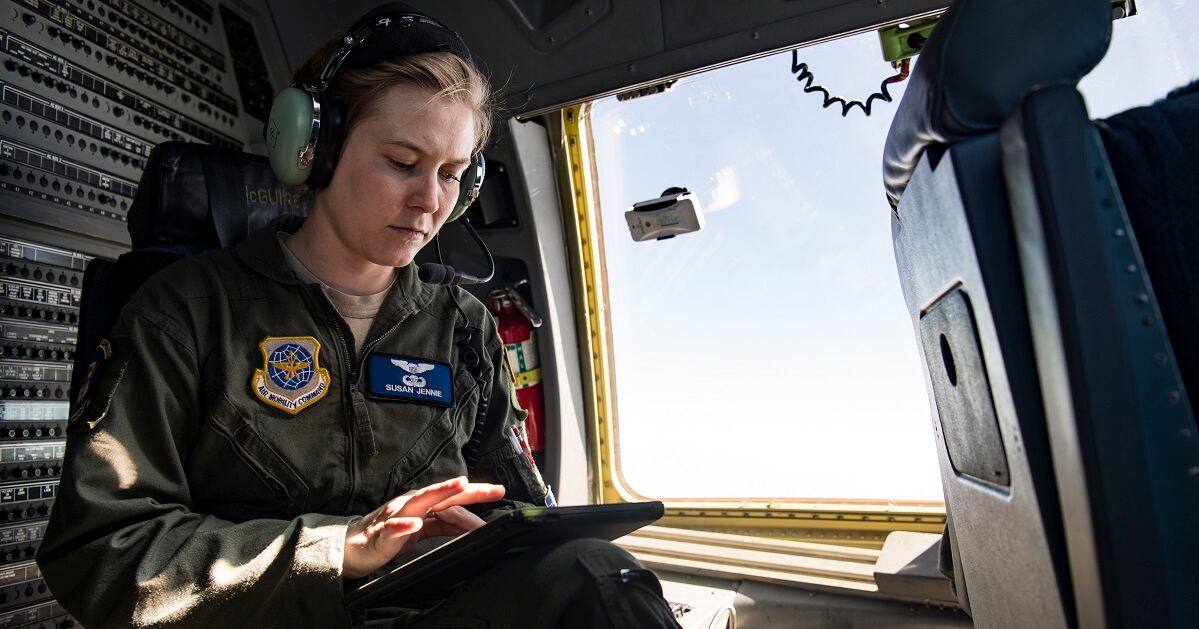A major push to reduce the number of airmen who can’t deploy due to medical reasons has been successful, the Air Force’s personnel chief told Air Force Times Tuesday. And so far, no airmen has been kicked out under the “deploy or get out” policy.
In an interview, Lt. Gen. Brian Kelly, deputy chief of staff for manpower, personnel and services said that the Air Force’s entire non-deployable population is at 4.6 percent, or a little more than 23,000 active duty, Guard and Reserve airmen. That is a decline from last December, when 6.8 percent of the total force, or 34,200 airmen, were considered non-deployable, Chief Master Sergeant of the Air Force Kaleth Wright told lawmakers in February.
“We’re pretty happy about getting that number below 5 percent,” Kelly said. “Now we’re trying to refine it and drive it even lower.”
Air Force Magazine first reported the latest statistics on non-deployability.
Most of those 4.6 percent of airmen are in what the Air Force calls temporary deployment-limiting conditions, Kelly said. Those conditions include female airmen who are pregnant or have recently given birth, he said, or airmen of either gender who have a temporary medical condition that is being resolved.
The remaining non-deployable airmen, representing roughly 1.5 to 2 percent of the total force, have permanent medical conditions limiting their ability to deploy that the Air Force has nevertheless decided to retain. Those airmen remain in uniform because they can get their job done from their home station, and deploying is not necessary.
RELATED

Former Defense Secretary Jim Mattis directed the strict non-deployability policy across the military in 2018, which said some troops who are not able to deploy for at least 12 consecutive months could be separated.
Last October, the Air Force said it could consider about 1,600 non-deployable active-duty airmen for separation.
Kelly said that the Air Force met Mattis’ broader goal of bringing non-deployability below 5 percent in June.
“We think that’s helped us, one, to drive a culture of self-responsibility in terms of being able to make sure you’re deployable and you’re ready,” Kelly said. “That means that everybody has some responsibility to stay fit, stay healthy, stay ready, make sure their medical appointments are done and completed, so that we’re ready to do what the nation asks us to do. Which is be ready to execute our jobs and missions, whether that’s in a formal or informal deployment.”
Kelly also said the Air Force has not yet discharged anyone for being non-deployable for 12 months or more. However, he said, there are airmen who have a medical condition that is limiting their deployment who are going through the normal disability evaluation process to see if they should be retained. Some airmen have been discharged because of their medical issues, he said, but such discharges were done previously and are not part of the “deploy or get out” system.
“That [disability evaluation] process didn’t change at all,” Kelly said. “As it already existed today, anytime that you came up with a medical condition that limits your deployment, your commander makes a recommendation and an evaluation, and then you go into the disability evaluation system to review that medical condition and see what exactly it’s doing in terms of limiting your deployment capability or your operational capability.”
In many cases, Kelly said, the Air Force decides to retain airmen who have limiting conditions. Such airmen might be able to deploy, but only to certain locations. Or they can do their particular job very well from their home stations, and deployments aren’t as necessary in their career field, Kelly said.
But for other airmen, whose jobs could depend on their ability to deploy, their disability might be serious enough that it keeps them from doing their jobs the way the Air Force needs. And in those cases, after a long process with many levels of review and appeal, Kelly said they could be separated — though this is separate from the deploy or get out program.
This effort also helped the Air Force identify other things it can do to further improve deployability, Kelly said. For example, keeping track of which Air National Guardsmen and reservists are ready to deploy is proving trickier than it is for active duty personnel, he said. So the Guard and Reserve is working to improve its tracking, he said.
And medical personnel have refined their processes for determining which medical conditions truly make deploying difficult or impossible, and which can be cured or mitigated, Kelly said.
Stephen Losey is the air warfare reporter for Defense News. He previously covered leadership and personnel issues at Air Force Times, and the Pentagon, special operations and air warfare at Military.com. He has traveled to the Middle East to cover U.S. Air Force operations.




